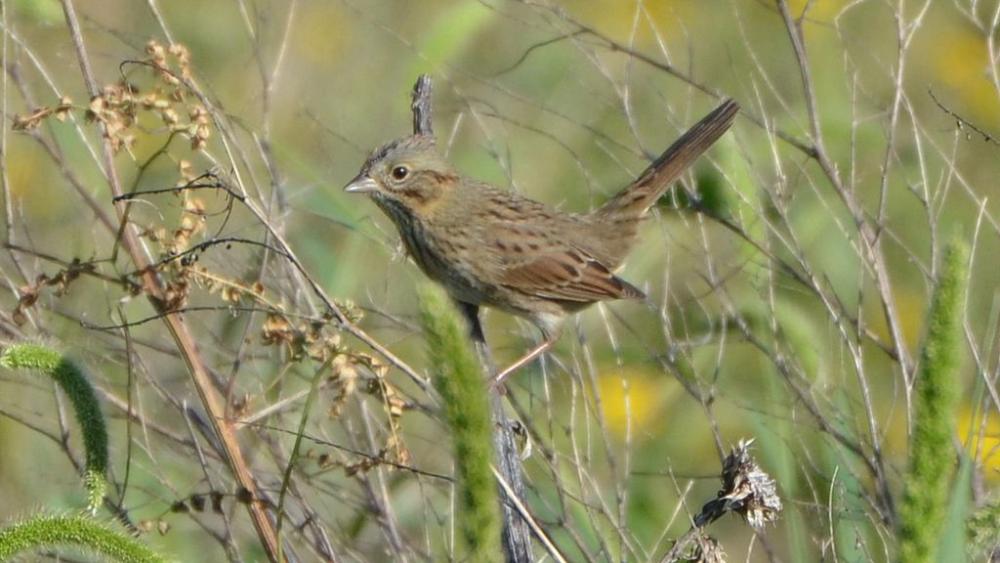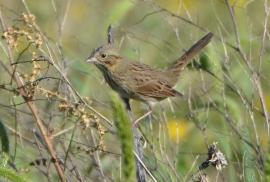Guide to Boreal Birds
Overview
When not singing, Lincoln's Sparrow is wary and secretive. This unobtrusive bird of the northern bogs was first described by Audubon in 1834 from a specimen he collected in Quebec, and he named the bird for Robert Lincoln, a companion on his trip to Labrador. Although not uncommon during migration, Lincoln's Sparrow is seldom noticed because of its shyness and its resemblance to the Song Sparrow. Lincoln's Sparrow is a distinct microsite specialist, preferring low willow cover with dense ground vegetation and builds its nest in surprisingly boggy sites. Because it exhibits a distinct preference for dense shrub cover, and is secretive in nature, much of its biology remains poorly documented. In most locations, spring migration peaks in May, and departure from breeding grounds begins early September.
Description
5-6" (13-15 cm). Crown has 2 rusty stripes; gray eyebrow. Buff band, finely streaked with black, across upper breast. Similar to Song Sparrow, but more finely streaked and shyer.
Voice
A rich, gurgling, wren-like song rising in the middle and dropping abruptly at the end.
Nesting
4 or 5 pale green eggs, heavily spotted with brown, in a cup of grass well concealed in forest undergrowth.
Habitat
Brushy bogs, willow or alder thickets; winters in woodland thickets and brushy pastures.
Range/Migration
Breeds from Alaska, northern Quebec, Labrador, and Newfoundland south to California, northern New Mexico, and northern New England. Winters across the southern tier of United States.



